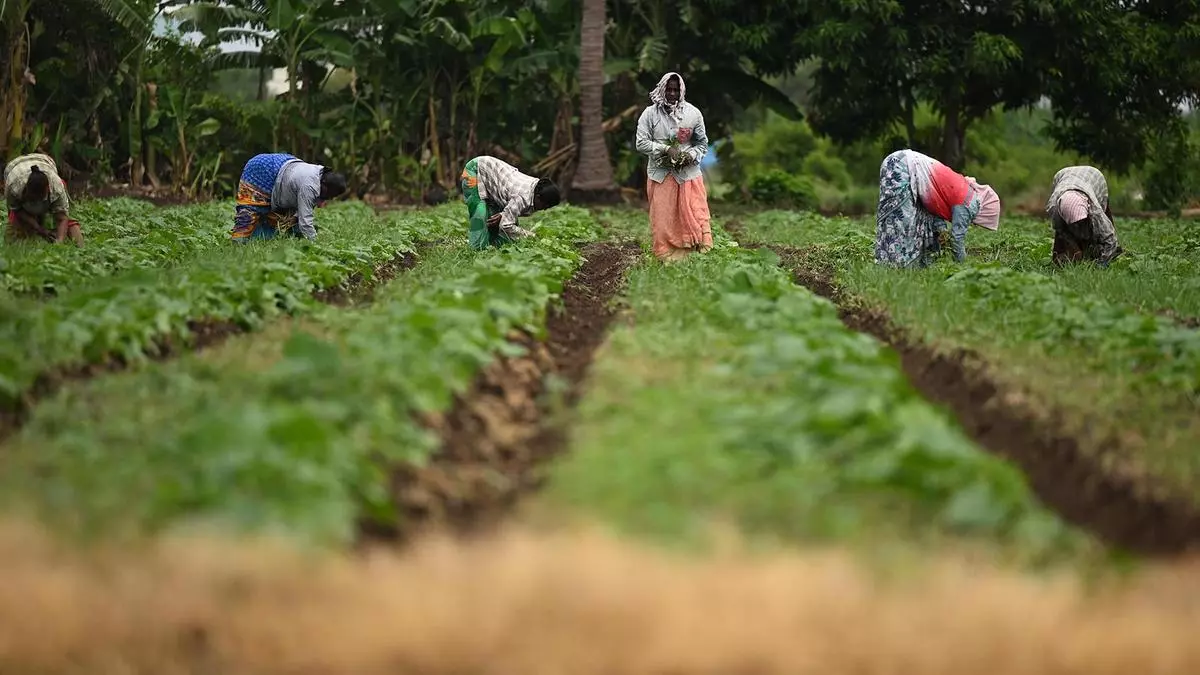Agriculture in Budget focuses on long-term gains, gets precedence over short-term pain
The agriculture sector in India has been consistently growing over the last few years and it continues to employ a sizeable percentage of the population. The performance of the sector remains critical not only for the economic growth of the country but also for ensuring food security, given the growing population and increasing consumption. It is heartening to see agriculture being given due importance and considered one of the nine priority areas in the Budget 2024.
Policy’s focus areas on long-term improvements
Although the sector has witnessed an annual growth rate of around 4.2 per cent in the last five years, the recent growth in the sector is expected to touch an abysmally low figure of around 1.4 per cent. This has a cascading impact on rural real wage growth and consumption. Given the stress in the farm and off-farm sectors, it was expected that the Budget would focus on some tactical measures to ease the rural stress in the short term. However, the current Budget has emphasised productivity improvement, research and innovation, building resilient and sustainable agriculture value chains, and adoption of digital interventions which are expected to usher in long-term structural transformation in the sector. How much of these measures will help ease the short-term pain points remains to be seen.
However, it merits to analyse the long-term impact of the measures announced for the agriculture and allied sectors in the Budget. One of the important announcements in the Budget is the development of the National Cooperation Policy. Since there is a predominance of marginal and small farmers in Indian agriculture, the main issues of lack of scale, aggregation, and developing proper farmgate infrastructure persist, in spite of several initiatives by the government. The proposed policy may address these issues which in turn will give better bargaining power to producers and help improve their incomes. This will help in collectivising farmers and creating more robust supply chains across several agriculture and horticulture crops where there is a sizeable marketable surplus but also significant post-harvest losses. Measures announced in this Budget along with the policy will help address this.
Improving productivity
The second broad area of focus is on agriculture research to improve productivity and quality and develop climate-resilient varieties. It is important to note that the country’s spending on R&D is around 0.64 per cent, which is significantly lower compared to other countries such as the USA (3.5 per cent), Germany (3.1 per cent), China (2.4 per cent), and South Korea (4.8 per cent), although the Gross Expenditure on Research and Development (GERD) has more than doubled in the period from 2010-11 to 2020-21. More importantly, private sector spending in India is around 37 per cent of the country’s GERD in contrast to the global trend of more than 65 per cent contribution by the private sector. While the announcement to operationalise the Anusandhan National Research Fund for basic research and prototype development is a welcome move, the real game changer can be a step to encourage private sector-led research and innovation at a commercial scale with a financing pool of ₹1 lakh crore.
Thirdly, continuing with the trend in earlier Budgets, the focus on sustainability is evident in this year’s Budget too. The announcement of measures for adoption of natural farming wherein 1 crore farmers are targeted to be brought under the ambit. While this is undoubtedly a great step, the way it gets implemented is equally important. Handholding farmers during transition from conventional to natural farming in terms of ensuring availability of inputs, right training, other resources, and access to working capital will be the key.
Fourthly, the evolving consumption landscape indicated by the demand for proteins, and an increasing awareness about food safety has been addressed in some of the measures announced in the Budget. Measures to promote shrimp production and Mission for Pulses and Oilseeds are expected to create self-sufficient ecosystem and fulfil the domestic demand. The development of shrimp value chain can give a boost to exports from India, thereby benefitting farmers as well. The thrust on food safety has been reflected in the announcement to set up 100 testing laboratories under NABL which can give the much-needed boost to the inadequate infrastructure the processing industry is grappling with at present.
Boost to value-addition
The fifth area of focus is on creating rural enterprises in the sector. Despite employing more than 50 per cent of the population, the contribution of the agriculture sector to the GDP is a meagre 15 per cent. To facilitate the GVA, focus on promoting manufacturing and value addition in the sector is apparent in the announcements in the Budget. Given the sector has a large percentage of micro, small and medium enterprises, steps such as setting up multi-product food irradiation units by MSMEs, introduction of credit guarantee schemes for procurement of machineries and equipment without collateral, credit support during stress periods, and support for women entrepreneurs will go a long way in formalising the economy, boost value addition and output.
Lastly, the Budget also mentions the implementation of Digital Public Infrastructure (DPI) which is expected to unlock efficiency in the agriculture and allied sectors. The target to bring 6 crore farmers under the ambit of DPI is t an ambitious one, but can be achieved through strengthening the digital infrastructure, connectivity in the rural areas, creation of awareness among farmers and training to farmers. Improved adoption of DPI can bring in the much-needed efficiency in the value chain which will give the Annadatas of the country timely access to resources, advisory and financial support, and in the process, will create a globally competitive food industry.
(The author is Partner, Food and Agribusiness, Management Consulting, BDO India. Views are personal)
